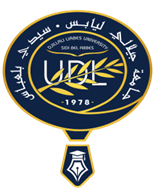Browsing by Author "Encadreur: ZIADI Abdekader"
Now showing 1 - 1 of 1
Results Per Page
Sort Options
- ItemAnalyse expérimentale et modélisation du comportement thermodynamique des aciers inoxydables et dual phase. Application au procédé du soudage par résistance par point(2016-12-14) LEBBAL Habib; Encadreur: ZIADI Abdekader; Co-Encadreur: BOUKHOULDA F.BenallelRésumé (Français et/ou Anglais) : Résumé Le présent travail porte, d’une part, sur l’influence des paramètres de soudage par résistance par points sur la résistance mécanique du point de soudage, et d’autre part, sur la modélisation du phénomène thermomécanique de ce procédé d’assemblage de tôles minces utilisées dans l’industrie automobile. La simulation expérimentale avait pour but de déterminer les caractéristiques mécaniques du point en déterminant les charges limites du noyau et les contraintes résiduelles dues au procédé de soudage en faisant varier le temps de soudage, l’intensité de courant, les paramètres géométriques de tôles et le type de matériau. L’analyse des résultats a mis en évidence l’influence des paramètres suscités sur la résistance du point de soudure. Dans un deuxième temps, une analyse numérique du procédé a été réalisée au moyen du logiciel de calcul ANSYS 13.0. Un modèle électro-thermo-métallurgique à rayons de contact constants a été développé afin de simuler numériquement le soudage par résistance par points des tôles dont les épaisseurs varient généralement entre 0,5 à 3mm. La résistance électrique de contact entre les tôles impose une montée en température pouvant atteindre des valeurs proches de 800 °C. Abstract This work focuses on the influence of resistance spot welding parameters on the strength of the welding point, and modeling of the thermomechanical phenomenon of this method of joining thin sheets used in the automotive industry. The experimental simulation was to determine the mechanical characteristics of the point by determining yield stress and the residual stresses due to the welding process by varying the welding time, the current intensity, the geometric parameters of sheets and the type of material. Analysis of the results showed the influence of parameters raised on the strength of the welding point. In a second step, a numerical analysis method was carried out using the ANSYS 13.0 calculation software. An electro-thermo-metallurgical model in constant contact rays has been developed to simulate digitally the resistance spot welding of metal sheets whose thickness generally varies between 0.5 to 3mm. The electrical contact resistance between the metal sheets requires a rise in temperature up to values close to 800 °C.
